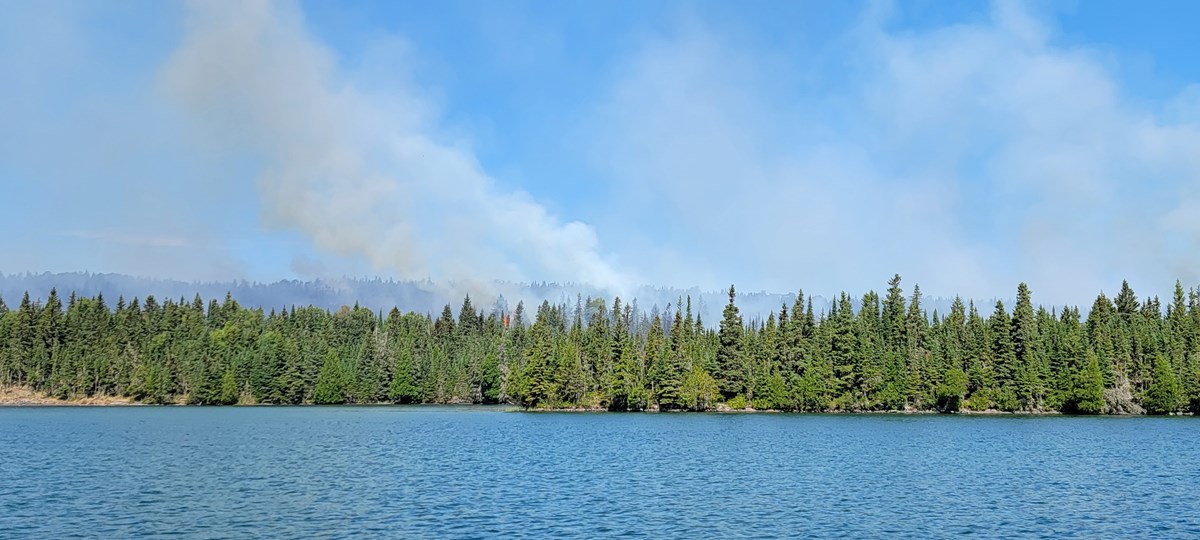After nearly a month of burning, progress on containing Isle Royale’s Horne Fire continues. The fire, which is believed to have been caused by a lightning strike, was ignited on Aug. 10. The fire began near the national park’s Duncan Bay by the Tobin-Duncan trail, and it quickly grew in size.
By Aug. 24, the fire had grown to an approximate 200 acre area and was only 15 percent contained. By Sep. 2, this area increased to 429 acres and was 45 percent contained. Now, as of Sep. 7, the fire encompassas an area of about 521 acres and is 85 percent contained. Many areas of Isle Royale remain closed to the public to ensure the health and safety of its visitors.
Isle Royale has an extensive history of wildfires. Because of the island’s relative lack of a human presence, lightning has been a leading cause of these fires with records from 1940 to 1965 showing that lightning caused fires on the island on an average of once a year. Thankfully, the majority of these fires were quickly extinguished.
Isle Royale’s 1936 fire set a benchmark for wildfires on the island. Having begun near the end of July, the 1936 fire reached an approximate 27,000 acres before it was extinguished in the middle of September. Over 1,800 firefighters worked to contain the fire, with forces coming in from the U.S. Fire service, U.S. Navy, the U.S. Coast Guard, as well as the park’s own Civilian Conservation Corps. Still, the fire took 20 percent of the park’s forests, inspiring the need for greater wildfire protection in the area, leading to the creation of the three fire towers that sit in the park today.
However, not all is grim when it pertains to wildfires in the national park. Forest fires can be beneficial to local flora and fauna in a multitude of ways. Fires may eradicate overgrown underbrush that has pushed out species of plants requiring direct sunlight. Fire can stop the spread of invasive species which are not accustomed to fire. Wildfires often lead to the creation of new habitats beneficial to a number of species.
Some species, such as the Jack pine, the bearberry, and moose, require the regular recurrence of fires to survive. Jack pine seed cones require intense temperatures in order to open. Without these high temperatures, the jack pine fails to repopulate. Bearberries, one of the leading ground fauna on the island, require the clearing of higher elevation vegetation to grow. Meanwhile, moose benefit from wildfires in that their food population grows as a result of these fires, in a similar manner to the Jack pine. Moose additionally benefit from fires in that it makes their terrain easier to navigate, allowing them to escape from predatory wolves more often.
The ongoing Horne Fire on Isle Royale has halted much of its usual visitor activity and frightened many with its potential consequences. However, when looking into the history of wildfires on the island, as well as the potential benefits that a wildfire may bring, a more balanced picture of the situation is revealed.


